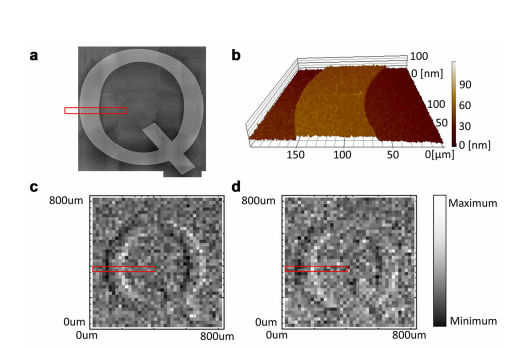World’s First Entanglement-Enhanced Microscope
Physicists have long known that entangled photons can make more precise measurements than independent ones. Now Japanese physicists have built a microscope that proves it.
One of the exciting possibilities of quantum mechanics is the ability to measure the world far more precisely than with classical tools. Today, Takafumi Ono and pals at Hokkaido University in Japan say they’ve exploited this to create the world’s first entanglement-enhanced microscope. Their new toy produces images with entangled photons that are significantly sharper than those possible with ordinary light alone.
Entanglement is the strange quantum property in which two particles share the same existence, even though they may be far apart. Ono and co say this is particularly useful for a type of imaging known as differential interference contrast microscopy.
This works by focusing two beams of photons into spots next to each other on a flat sample and measuring the interference pattern they create after they have been reflected. When both spots hit a flat part of the sample, they travel the same path length and create a corresponding interference pattern. But when the spots hit areas of different heights, the interference pattern changes.
This story is only available to subscribers.
Don’t settle for half the story.
Get paywall-free access to technology news for the here and now.
Subscribe now
Already a subscriber?
Sign in
You’ve read all your free stories.
MIT Technology Review provides an
intelligent and independent filter for the
flood of information about technology.
Subscribe now
Already a subscriber?
Sign in
It is then possible to work out the shape of the surface by analysing the change in the interference pattern as the spots move across it.
The difference in phase of photons can be measured with huge accuracy, but even this has a limit, known as the standard quantum limit. However, physicists have known for some time that it’s possible to improve on this by using entangled photons rather than independent ones.
That’s because a measurement on one entangled photon gives you information about the other, so together they provide more information than independent photons.
Ono and co demonstrate this using entangled photons to image a flat glass plate with a Q-shaped pattern carved in relief on the surface. This pattern is just 17 nanometres higher than the rest of the plate and so tricky to resolve with ordinary optical techniques.
Entangled photons significantly improve on this. Ono and co say the signal to noise ratio using their technique is 1.35 times better than the standard quantum limit. And the resulting image is noticeably improved, simply by visual inspection (the image with entangled photons is on the left in the above figure). “An image of a Q shape carved in relief on the glass surface is obtained with better visibility than with a classical light source,” they say.
That should be useful in a number of different applications; when samples might be damaged by intense light, for example.
Enhanced microscopy is just one of many applications for quantum metrology. It should also help improve the resolution of the interferometers used in gravitational wave astronomy, for example. So it’s good to see a success like this in another area.
Ref: arxiv.org/abs/1401.8075: An Entanglement-Enhanced Microscope
